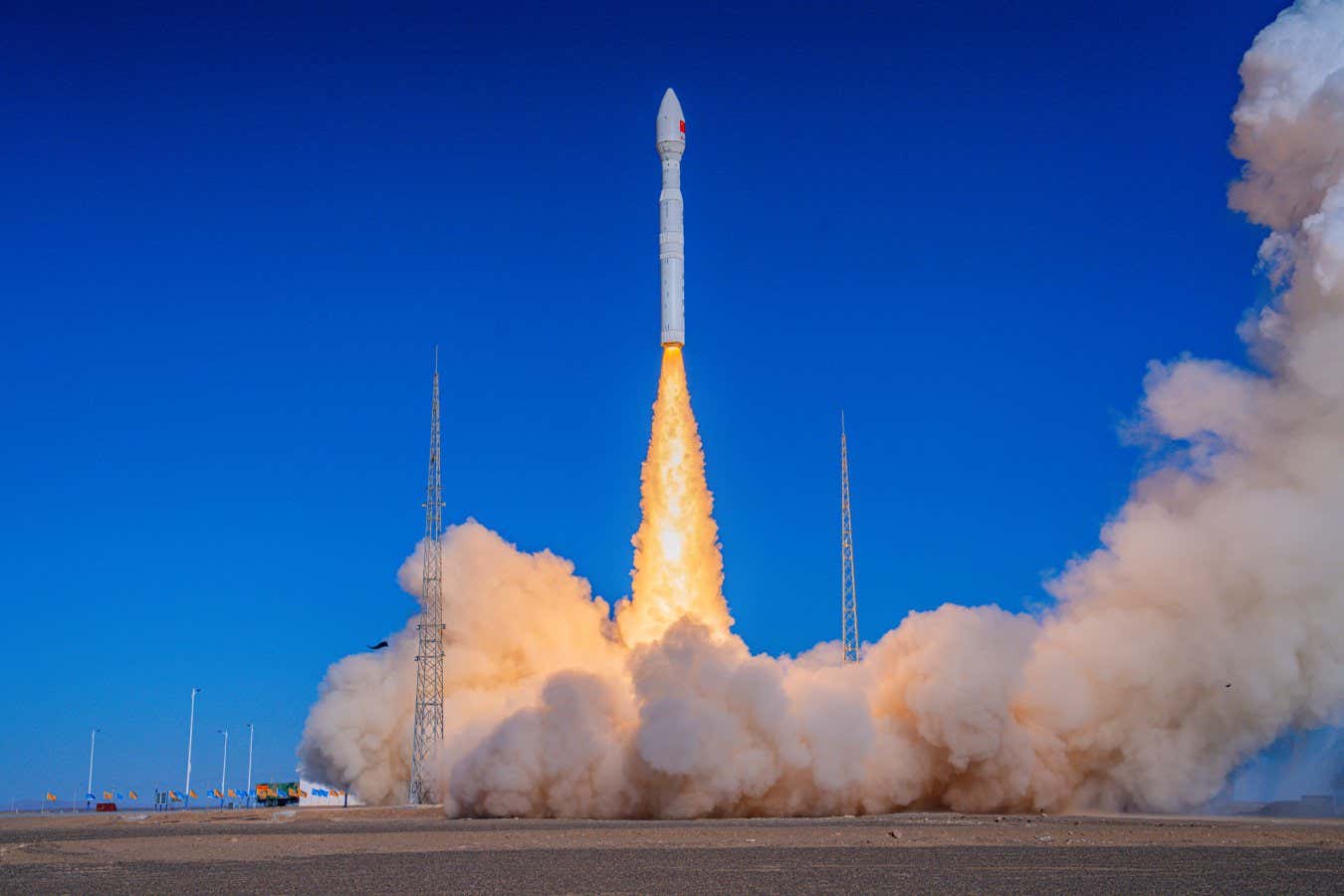A record-setting test of quantum communication used a microsatellite to connect ground stations in China and South Africa, bringing a global quantum internet closer to reality
By Jeremy Hsu
19 March 2025
A satellite-carrying rocket blasts off from a commercial aerospace zone in China
VCG/Getty Images
A small quantum satellite created a secure link between ground stations in China and South Africa, sharing quantum-encrypted data over a record distance of 12,900 kilometres. Similar microsatellites could become part of a future quantum internet.
The record-breaking feat, which occurred in October 2024, was also notable for its use of a satellite with a small, light payload – a crucial consideration for space launches. The miniaturised equipment aboard the Jinan-1 microsatellite weighed just 23 kilograms, about 10 times less than the payload of a previous experiment.
Read more
Quantum teleportation can survive through busy internet cables
Advertisement
Petite quantum satellites like the Jinan-1 enable “the possibility to launch many satellites in one shot with the same space launcher, similar to what SpaceX is doing with Starlink for the internet,” says Laurent de Forges de Parny at Thales Alenia Space, a space technology company headquartered in France.
In this experiment, researchers used the quantum states of photons to produce secret keys for encrypting and decrypting data. The keys were used to encode images – photos of China’s Great Wall and South Africa’s Stellenbosch University – and then transmitted between the Jinan-1 satellite and various ground stations using lasers and telescopes. The research team, led by Jianwei Pan at the University of Science and Technology of China, performed this quantum key distribution process 20 times, including the record-setting 12,900-kilometre test.
This showcase for quantum technology has its limits. The Jinan-1 satellite “seems optimised for quantum key distribution, and is not going to perform more general quantum communication tasks like teleportation, or entanglement distribution,” says Alexander Ling at the National University of Singapore. Nevertheless, Ling, praising the demonstration, says it could become part of real communication networks within the next decade.
